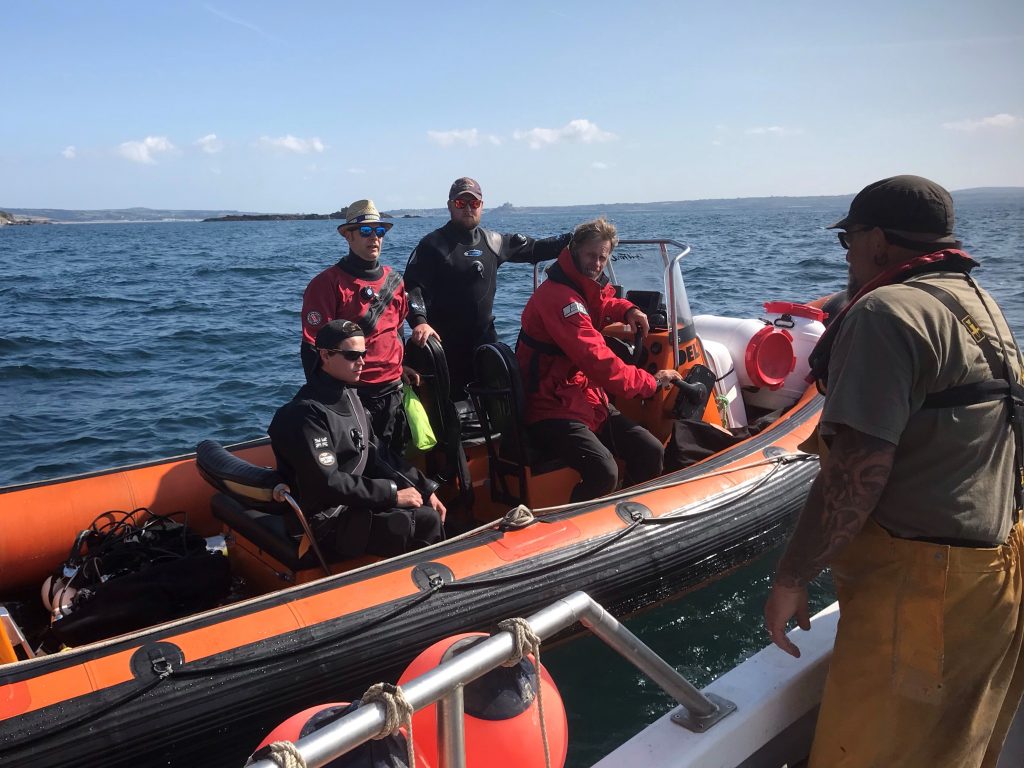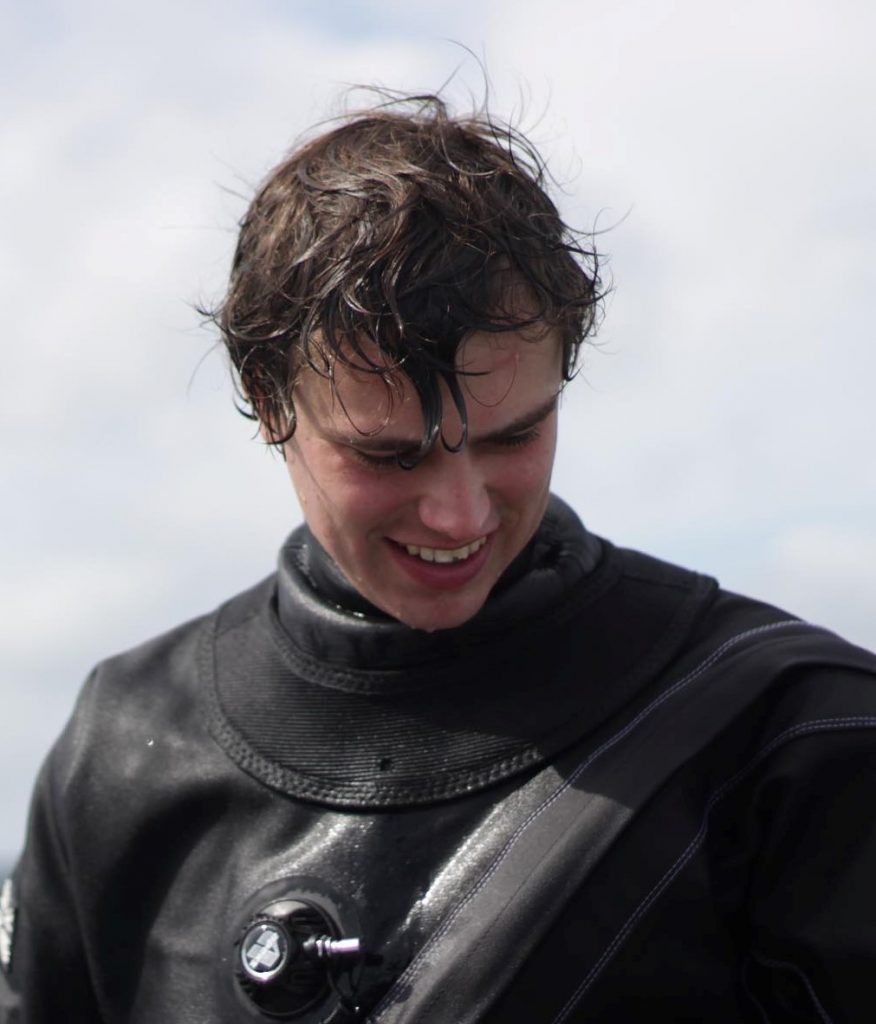 Divers and fishermen working in harmony! Image: Peter Gibbs
Divers and fishermen working in harmony! Image: Peter Gibbs
Shipwrecks become artificial reefs that provide homes for fish and crustaceans. For this reason inshore fishermen sometimes set their nets and traps near them, but get too close and the gear can become caught and lost!
One such fisherman is Peter Gibbs, skipper of the Lady of Ennis in Cornwall. Unable to free a lobster line that had snagged the wreck of the Conqueror he gave Ghost Fishing UK a call.
Divers Fred Nunn, Tom Ball, and Rob Hanlon were duly mobilised to investigate.
The sun was shining, the sea was calm – a bright clear Tuesday in July. Perfect diving conditions! Andy Cowie, skipper of the rigid-hulled inflatable boat the Mis Me arrived at the wreck site. Peter was there too, hauling up the lobster line to allow our three divers to descend on it to the seabed.
Swimming along the bright white rope through the waving arms of kelp forest that covered the rocky reef it was easy to find the snag. The line that connected the string of lobster posts together had pushed through the rusting ship’s hull and become hooked fast. It was easy for the divers to release, and shortly afterwards they were free to take a look around.
“My favourite dive was probably the second dive after lunch, as the first dive we released an ensnared string of pots, for the fishermen who had requested our assistance, and then surveyed the rest of the Conqueror, but the second dive we actually recovered a large volume of net and a pot from the wreck,” says Rob Hanlon
The MFV Conqueror is a fishing trawler that was wrecked on the rocks at Penzer Point near Mousehole on Boxing Day in 1977. Holed at midships she remained on the rocks for several years before slipping out to sea.
With underwater visibility of eight metres it was not long before the divers found three large bundles of fishing net. They continued on to find a single lobster pot its base rotted-out with time, and more remnants of similar nets. Launching a fluorescent pink surface marker buoy ensured they would quickly get back to the spot, so they ended the dive and returned to the surface.
Peter was delighted to get his pots back, but Rob was thinking about the net.
Jumping back into the water the trio planned to tackle the net. Tom and Rob attached lift bags to three sections, while Fred acted as safety diver and photographer. Shaking the net to see where it settled the perfect visibility reduced to two metres.
Swimming over to the largest section of net Tom and Rob formed a tag team, alternating the task of cutting it at the lowest point until a section came away. This process continued until all the sections were floating on lift bags back to the surface.
Their gas was now running low, so it was time to return to the boat. 42 kg of net was removed for recycling, together with the lobster pot! A good day’s work, but with still more to do the divers made plans to return as they sped back to port.
| Diver profile: Rob Hanlon | |
| I started diving with a try dive on my seventeenth birthday, at a summer fete, and as soon as possible afterwards I joined the local BSAC club and started on the introductory Ocean Diver course. I’m now a PADI Divemaster, and HSE qualified. I’m a marine biology student in Plymouth and so I love areas with lots of life, but I’m also very interested in history, and wrecks fascinate me – I’m very keen on finding spidge and going through wrecks to see if there’s anything to be found. I like diving because it’s when I feel most calm, and it’s like visiting an alien world! I heard about Ghost Fishing UK while I was at Aquanauts and instantly wanted to get involved, so I crewed the boat on their training course. I attended the next course I could make, at Easter this year. The Conqueror was my first live recovery, although the Plymouth training was done on genuine ghost net. Since then I have volunteered for four days of recovery dives in Cornwall, and am booked on two more missions this year. |

